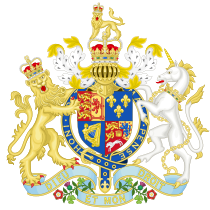Anthony Fortescue (c. 1535 – died in or after 1611), along with his fellow conspirators, was in 1558 arrested for having used treasonous magic against Queen Elizabeth I.[1] Following the death of Queen Mary I and the accession of Elizabeth in 1558, England was in a state of “spiritual crisis”, and combatting treasonous magic quickly became a priority of Elizabeth’s new government.[2] The Privy Council recognised the political threat that conjuring and prophecies posed to the new regime, which was engaged in an unpopular war against France, and dealing with a sluggish economy and a lack of cash.[3]
Fortescue’s wife, Katherine Pole, was the niece of Reginald Pole, cardinal archbishop of Canterbury and papal legate during the reign of Queen Mary,[a]Mary was known as Bloody Mary owing to the number of Protestants executed during her reign. and Fortescue became comptroller of the archbishop’s household.[1] Mary died on 17 November 1558 and was succeeded by her half-sister Elizabeth, who was determined to restore the Protestant religion in England. A few days after Elizabeth’s accession to the throne, Fortescue employed two magicians, John Prestall and Thomas Kele, both known catholics, to cast a horoscope for the new Queen and so determine the likely duration of her reign. Hearing of this, the Privy Council ordered the arrest of Fortescue, Prestall and Kele on 22 November.[4]
Legal position
At the time of the arrests there was no law under which the three men could be prosecuted in a secular court, and so it appears that Fortescue was released. Prestall and Kele were sent to the Bishop of London, Edmund Bonner, to be tried in an ecclesiastical court; with no statute against conjuration, magicians could only be tried by their local bishop in a church court.[5] There is no evidence that Bonner took any action against either man.[3][6]
Partly as a result of the court’s failure to be able to act in this case, in 1559 Elizabeth’s first parliament introduced a bill calling for the “punishment of sorcery, witchcraft and buggery by felony”, with the penalty of death by hanging. The bill was passed by the House of Commons, but parliament was prorogued shortly after it reached the House of Lords, and it was never enacted. Parliament’s priority became to pass the Act of Uniformity 1558
One of the Acts of Parliament collectively known as the Elizabethan Religious Settlement. It introduced a Common Book of Prayer, and obliged everyone to attend their parish church every Sunday and on holy days. Those who refused were known as recusants. into law, in an attempt to quell the religious turmoil of the previous thirty years.[6]
Later developments
In 1562 Fortescue was involved in another plot against Queen Elizabeth, along with his brothers-in-law Arthur and Edmund Pole. Fortescue had once again consulted with Prestall and another magician, Edward Cosyn, who predicted that the Queen was close to death.[b]Elizabeth reigned as Queen of England until 1603. They and several others consequently planned to travel to Flanders, where Arthur Pole would claim the title of Duke of Clarence,[c]Arthur Pole was the great-grandson of the Duke of Clarence.[3] and then on to France, where they would seek the support of Catherine de’ Medici, the Guise family, and the pope. With their assistance, they planned to marry Edmund Pole to Mary, Queen of Scots, proclaim her Queen of England, and land an army of 6000 in Wales to overthrow Elizabeth, take her crown, and restore Catholicism to England.[1]
The plot was discovered in October 1562, and the conspirators were arrested. Tried for high treason on 26 February 1563, all were found guilty and condemned to death. Fortescue and the Poles escaped execution, perhaps owing to the intercession of Sir John Fortescue, Anthony’s brother, who was highly placed at court, but they were imprisoned in the Tower of London. Arthur and Edmund probably died in the Tower in about 1570, but Anthony seems to have been released and exiled at some point. It appears he was still alive in 1611, as he is cited in his brother Thomas’s will that year as one of his beneficiaries, but there the historical record ends.[1]
